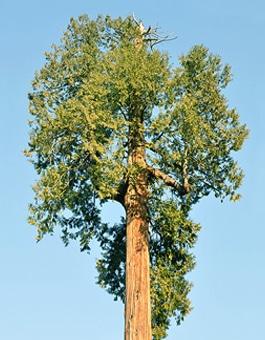

Making homes beautiful for centuries
Wood from western redcedar is prized for decks, siding and shake roofs because of its rot resistance. Western redcedar is an important conifer along streams where it provides large woody debris for healthy stream structure. It is known as “the cornerstone of Northwest coast Indian culture” because of prominent use of different components of the tree for everything from roofs to baskets – even dresses made from bark!
Range
It loves moist sites along streams and near springs or other wet areas, and it tends to be more prominent in the foothills of the Cascades and Coast Range where rainfall is heavier than on the valley floor.
Character
Western redcedar is a medium to large, long-lived, shade-tolerant conifer up to 150 feet tall. Its bark is gray to reddish-brown, and the leaves are scaly, sharp and glossy green. Its droopy branches that flip up at the end are unique to the western redcedar.
Climate
It likes moist ground and cool temperatures and doesn’t need much sun. However, best growth happens in full sun.
Understory
The leaves are a major food supply for many big game such as deer and elk.
Management
In mixed-species and uneven-aged stands, western redcedars tolerate shady understory conditions and can maintain slow but acceptable growth rates over long periods. In clearcuts and other disturbed areas, seedlings account for most of the western redcedar regeneration, but seedlings in mature stands may be less abundant than individuals produced by vegetative reproduction from layering, rooting of fallen branches, and branch development on fallen trees.